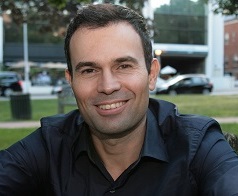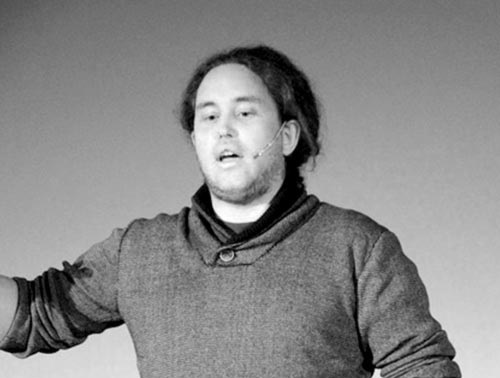Tutorials
Middleware 2017 will feature four exciting tutorials! These will be held before the main conference on December 11th (Monday) and 12th (Tuesday). The exact schedule will be updated soon.
Click on each tutorial to learn more about it or expand all.
High Performance Network Middleware with Intel DPDK and OpenNetVM
Tim Wood, George Washington University
Istio Service mesh for more robust, secure and easy to manage microservices
Edward Snible, IBM T. J. Watson Research Center
Fabio Oliveira, IBM T. J. Watson Research Center
SMACK stack 101: Building Fast Data stacks
Jörg Schad, Mesosphere
Trusted Execution of Software using Intel SGX
Christof Fetzer, TU Dresden, Germany
Pascal Felber, University of Neuchatel, Switzerland
Ruediger Kapitza, TU Braunschweig, Germany
Peter Pietzuch, Imperial College London, United Kingdom
 Timothy Wood is an associate professor in the Department of Computer Science at George Washington University. Before joining GW, he received a doctoral degree in computer science from the University of Massachusetts Amherst and a bachelor's degree in electrical and computer engineering from Rutgers University. His research studies how new virtualization technologies can provide application agnostic tools that improve performance, efficiency, and reliability in cloud computing data centers and software-based networks. His PhD thesis received the UMass CS Outstanding Dissertation Award, his students have voted him CS Professor of the Year, and he has won three best paper awards, a Google Faculty Research Award, and an NSF Career award.
Timothy Wood is an associate professor in the Department of Computer Science at George Washington University. Before joining GW, he received a doctoral degree in computer science from the University of Massachusetts Amherst and a bachelor's degree in electrical and computer engineering from Rutgers University. His research studies how new virtualization technologies can provide application agnostic tools that improve performance, efficiency, and reliability in cloud computing data centers and software-based networks. His PhD thesis received the UMass CS Outstanding Dissertation Award, his students have voted him CS Professor of the Year, and he has won three best paper awards, a Google Faculty Research Award, and an NSF Career award.
 Ed Snible is a software engineer at IBM TJ Watson Research Center and has contributed to more than ten US patents in the field of software deployment automation and verification. Ed is passionate about the user experience of the DevOps engineers who deploy and maintain systems. His research interests include autotuning microservices for robustness.
Ed Snible is a software engineer at IBM TJ Watson Research Center and has contributed to more than ten US patents in the field of software deployment automation and verification. Ed is passionate about the user experience of the DevOps engineers who deploy and maintain systems. His research interests include autotuning microservices for robustness.
 Fabio Oliveira is a Research Staff Member at the IBM T. J. Watson Research Center. He received a Ph.D. degree in Computer Science from Rutgers University in 2010. His research interests include cloud computing, systems management, distributed systems, and operational and DevOps analytics. His current research focuses on deriving meaningful insights from large volumes of metrics and monitoring data generated by complex microservice architectures.
Fabio Oliveira is a Research Staff Member at the IBM T. J. Watson Research Center. He received a Ph.D. degree in Computer Science from Rutgers University in 2010. His research interests include cloud computing, systems management, distributed systems, and operational and DevOps analytics. His current research focuses on deriving meaningful insights from large volumes of metrics and monitoring data generated by complex microservice architectures.
 Jörg is a software engineer at Mesosphere in Hamburg. In his previous life he implemented distributed and in memory databases and conducted research in the Hadoop and Cloud area. His speaking experience includes various Meetups, international conferences, and lecture halls.
Jörg is a software engineer at Mesosphere in Hamburg. In his previous life he implemented distributed and in memory databases and conducted research in the Hadoop and Cloud area. His speaking experience includes various Meetups, international conferences, and lecture halls.
 Rüdiger Kapitza studied Computer Science at the FAU Erlangen-Nürnberg and the University of Freiburg. He obtained his PhD from the FAU Erlangen-Nürnberg in 2007. In 2010, he was a visiting scientist at IBM Research Zurich. Since 2012, he is a professor at the TU Braunschweig, where he leads the distributed systems group at the Institute of Operating Systems and Computer Networks. His research interests can be broadly summarized as systems research targeting fault-tolerant and secure distributed systems with special focus on Byzantine fault tolerance and selected aspects of trusted execution. Currently, he investigates the use of hardware-based trusted execution support in the context of the EU project SERECA that aims at improving the trustworthiness of Cloud Computing.
Rüdiger Kapitza studied Computer Science at the FAU Erlangen-Nürnberg and the University of Freiburg. He obtained his PhD from the FAU Erlangen-Nürnberg in 2007. In 2010, he was a visiting scientist at IBM Research Zurich. Since 2012, he is a professor at the TU Braunschweig, where he leads the distributed systems group at the Institute of Operating Systems and Computer Networks. His research interests can be broadly summarized as systems research targeting fault-tolerant and secure distributed systems with special focus on Byzantine fault tolerance and selected aspects of trusted execution. Currently, he investigates the use of hardware-based trusted execution support in the context of the EU project SERECA that aims at improving the trustworthiness of Cloud Computing.
 Peter Pietzuch is a Full Professor at Imperial College London, where he leads the Large-scale Distributed Systems (LSDS) group (http://lsds.doc.ic.ac.uk) in the Department of Computing. His research focuses on the design and engineering of scalable, reliable and secure large-scale software systems, with a particular interest in performance, data management and security issues. He has published papers in premier international venues, including SIGMOD, VLDB, ICDE, OSDI, USENIX ATC, SoCC, ICDCS, CCS, CoNEXT, NSDI, and Middleware. Before joining Imperial College London, he was a post-doctoral fellow at Harvard University. He holds PhD and MA degrees from the University of Cambridge.
Peter Pietzuch is a Full Professor at Imperial College London, where he leads the Large-scale Distributed Systems (LSDS) group (http://lsds.doc.ic.ac.uk) in the Department of Computing. His research focuses on the design and engineering of scalable, reliable and secure large-scale software systems, with a particular interest in performance, data management and security issues. He has published papers in premier international venues, including SIGMOD, VLDB, ICDE, OSDI, USENIX ATC, SoCC, ICDCS, CCS, CoNEXT, NSDI, and Middleware. Before joining Imperial College London, he was a post-doctoral fellow at Harvard University. He holds PhD and MA degrees from the University of Cambridge.
 Pascal Felber received his M.Sc. and Ph.D. degrees in Computer Science from the Swiss Federal Institute of Technology in 1994 and 1998. He has then worked at Oracle Corporation and Bell-Labs (Lucent Technologies) in the USA, before joining Institut EURECOM in France. Since October 2004, he is a Professor of Computer Science at the University of Neuchâtel, Switzerland, working in the field of dependable, concurrent, and distributed computing. He has published over 150 research papers in various journals and conferences.
Pascal Felber received his M.Sc. and Ph.D. degrees in Computer Science from the Swiss Federal Institute of Technology in 1994 and 1998. He has then worked at Oracle Corporation and Bell-Labs (Lucent Technologies) in the USA, before joining Institut EURECOM in France. Since October 2004, he is a Professor of Computer Science at the University of Neuchâtel, Switzerland, working in the field of dependable, concurrent, and distributed computing. He has published over 150 research papers in various journals and conferences.
 Christof Fetzer has received his diploma in Computer Science from the University of Kaiserslautern, Germany (Dec. 1992) and his Ph.D. from UC San Diego (March 1997). Dr. Fetzer joined AT&T Labs- Research in August 1999 and had been a principal member of technical staff until March 2004. Since April 2004 he heads the endowed chair (Heinz-Nixdorf endowment) in Systems Engineering in the Computer Science Department at TU Dresden. He is the chair of the Distributed Systems Engineering International Masters Program at the Computer Science Department.
Prof. Dr. Fetzer has published over 150 research papers in the field of dependable distributed systems, has been member of more than 50 program committees, has recently won four best paper awards (DEBS2013, LISA2013, SRDS2014, EuroSys2017), his PhD students have won two best student paper awards (IEEE Cloud 2014, DSN2015), and the EuroSys Roger Needham Award 2014. He currently coordinates two EU H2020 projects: SERECA and SecureCloud.
Christof Fetzer has received his diploma in Computer Science from the University of Kaiserslautern, Germany (Dec. 1992) and his Ph.D. from UC San Diego (March 1997). Dr. Fetzer joined AT&T Labs- Research in August 1999 and had been a principal member of technical staff until March 2004. Since April 2004 he heads the endowed chair (Heinz-Nixdorf endowment) in Systems Engineering in the Computer Science Department at TU Dresden. He is the chair of the Distributed Systems Engineering International Masters Program at the Computer Science Department.
Prof. Dr. Fetzer has published over 150 research papers in the field of dependable distributed systems, has been member of more than 50 program committees, has recently won four best paper awards (DEBS2013, LISA2013, SRDS2014, EuroSys2017), his PhD students have won two best student paper awards (IEEE Cloud 2014, DSN2015), and the EuroSys Roger Needham Award 2014. He currently coordinates two EU H2020 projects: SERECA and SecureCloud.